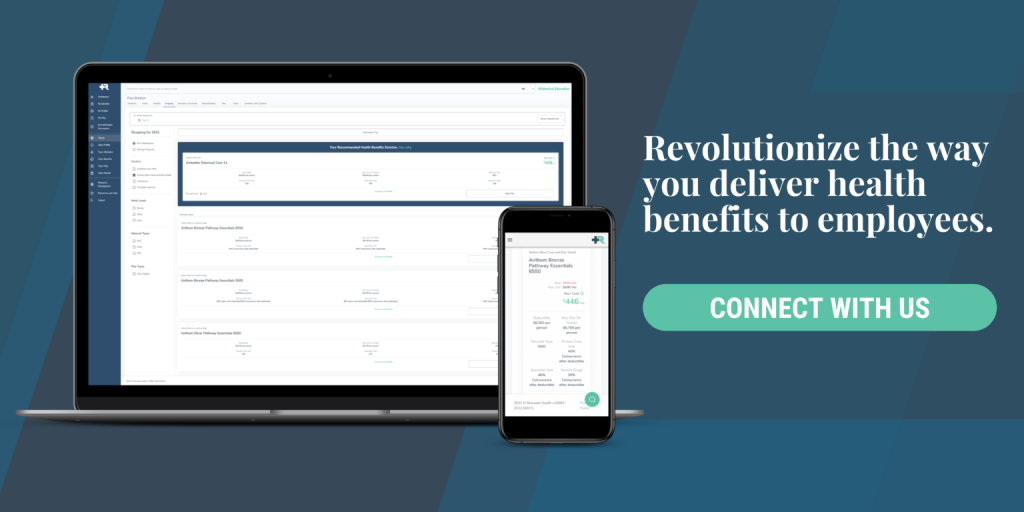When it comes to small business, the unpredictability of the future often feels like a constant. However, providing stability is essential to ensure consistent productivity and strategic momentum. Success is found when you learn to balance these two factors, and accomplishing this is possible. It requires leaders to stay intentional and engaged while navigating uncertainty as a small business owner.
1. Look Ahead and Make a Plan
Your first step in navigating uncertainty is to see where you’re headed. This is determined by where you’ve been in the past compared to where you are today. Draw a line between those two, follow it into the future, and that’s your trajectory.
While tracing your trajectory is helpful, it can still be altered by other factors like seasonality and referrals. It’s good to add conservative estimates for positive impact. But negative impacts, such as economic decline, should also be considered.
Based on data you’ve compiled, project where you believe you’ll be in 3, 6, and 12 months from now. Make two versions of these estimates: your worst case scenario and your best case scenario. Then, pick the spot in the middle.
Once you know your trajectory, identify key checkpoints with real outcomes and deadlines. Check every two weeks to confirm that you’re still tracking toward those important milestones. If not, make slight adjustments.
Make decisions now that will set you up best for the future. If what you are doing today is not helpful to your success tomorrow, or one year from now, then perhaps you may want to rethink your strategy.
2. Embrace Innovation
Change will occur. We can seldom control when that change will happen, or what it will impact. However, we can control how we respond to it. Ignoring change altogether is one of the worst things we could do!
Change can be a powerful asset. It pushes us to try new things and often leads us to discover methods of accomplishing the same outcome in a more effective and efficient way than ever before.
Some practical examples of this might be a church streaming their weekend services for the first time, a dine-in only restaurant branching out into food delivery, or even a retailer offering curbside pickup.
During times of change, people are more open to trying new things. What if you believed this could actually be one of the most powerful moments in the life of your organization? What if you asked what your innovation is?
Embracing change and developing innovation might be the very elements you need to hit your goals.
3. Use All of Your Tools
The core definition of innovation is using something old in a new way. This means it’s time to take a look at your current toolset. This should include anything from your technology to your processes and more.
Is there anything from those tools that can be used to accomplish something new? For example, though originally designed for text-only team communication, Slack released integrated video into an old platform.
In this push for innovative thinking, don’t forget your people. They represent not only an important asset, but also an invaluable tool. Seemingly “average” people have regularly proven to discover the most inventive solutions. Listen to them!
Sometimes, though, change is so significant that it requires learning a new tool. For example, using Zoom as a communication tool, or the SBA’s various relief options as a financial tool.
Not all tools will be applicable or available, but keep exploring. The co-founder of Pixar Animation, Ed Catmull, reminds us that the worst thing for anyone to do in times of uncertainty is nothing at all. What can you do?

4. Rethink Health Benefits
The mission of the organization cannot be fulfilled without the right amount of resources. Regaining and repurposing resources is a primary principle of good stewardship. When you trim back from one area, you can give to another.
Because your people represent some of your most valuable assets, taking care of them should be a top priority. Very little will impact them more than their wages and their access to quality healthcare.
Traditional group health insurance can feel like being stuck in a rut. But now, innovative solutions are available to help you care for people personally while still saving money for the whole group.
By using an individual coverage HRA or a wage increase model through a third-party service, you can keep access to personalized healthcare while still providing your team the help they need. Solutions like these are both possible and less costly.
Instead of staying stuck, you can leverage innovation to stop overspending in one area and use that money to invest into another part of the business. Regularly, organizations see 30% or more in savings to reinvest.
5. Keep Leading Well
Everyone handles uncertainty differently. Being attentive to this truth will guide your leadership and give you the insight to customize your approach so each person is cared for more uniquely and effectively.
It is still possible to offer stability to your team even in the midst of change. The deeper the roots you provide, the further they can branch out into something new. In what ways can you stay consistent for them?
In the words of leadership expert Craig Groeschel, “People would rather follow a leader who is always real than one who is alway right.” The reality is that even leaders can feel just as uncertain as everyone else.
Never shy away from empathy and transparency. How would you prefer to be treated? More importantly, how do you imagine your team, each individual, would like to be treated? This is your framework on which to build during times of uncertainty.

